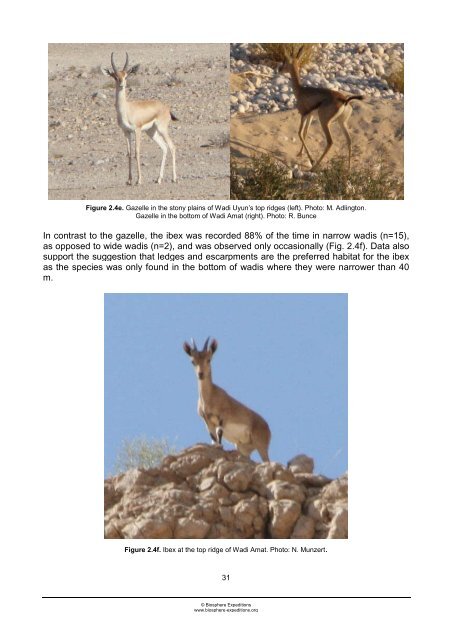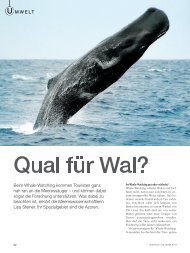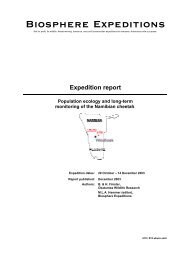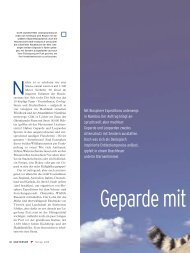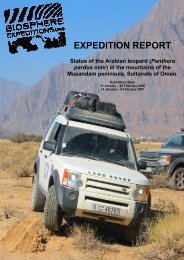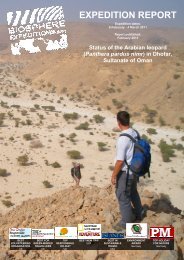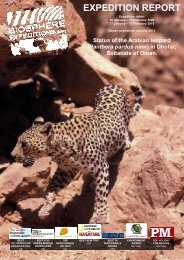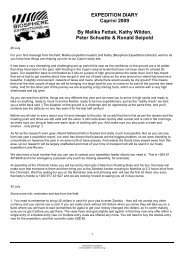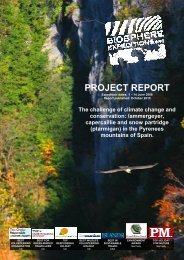Status of the Arabian leopard Panthera pardus nimr - Biosphere ...
Status of the Arabian leopard Panthera pardus nimr - Biosphere ...
Status of the Arabian leopard Panthera pardus nimr - Biosphere ...
You also want an ePaper? Increase the reach of your titles
YUMPU automatically turns print PDFs into web optimized ePapers that Google loves.
Figure 2.4e. Gazelle in <strong>the</strong> stony plains <strong>of</strong> Wadi Uyun’s top ridges (left). Photo: M. Adlington.<br />
Gazelle in <strong>the</strong> bottom <strong>of</strong> Wadi Amat (right). Photo: R. Bunce<br />
In contrast to <strong>the</strong> gazelle, <strong>the</strong> ibex was recorded 88% <strong>of</strong> <strong>the</strong> time in narrow wadis (n=15),<br />
as opposed to wide wadis (n=2), and was observed only occasionally (Fig. 2.4f). Data also<br />
support <strong>the</strong> suggestion that ledges and escarpments are <strong>the</strong> preferred habitat for <strong>the</strong> ibex<br />
as <strong>the</strong> species was only found in <strong>the</strong> bottom <strong>of</strong> wadis where <strong>the</strong>y were narrower than 40<br />
m.<br />
Figure 2.4f. Ibex at <strong>the</strong> top ridge <strong>of</strong> Wadi Amat. Photo: N. Munzert.<br />
31<br />
© <strong>Biosphere</strong> Expeditions<br />
www.biosphere-expeditions.org


